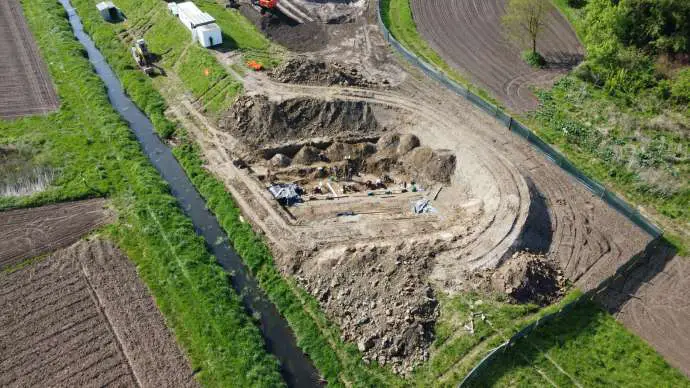STA, 22 June 2022 - The remains of at least 529 people executed in post-WWII summary killings have been unearthed from an anti-tank trench in Mostec near Brežice, east Slovenia, according to the Military Heritage Administration (Uprava za vojaško dediščino), which is part of the Defence Ministry.
Archaeological excavation at the site was carried out due to construction of a chain of power stations on the river Sava.
The anti-tank trench, originally dug out in 1945 by the occupying Nazi forces, is around 4.6 metres wide and 3 metres deep.
Historians claimed an area of 120 metres of the trench contained remains of people of various nationalities killed immediately after WWII, and several probes carried out after 2008 confirmed the presence of human remains.
In 2020, the remains of at least 276 people were found alongside thousands of personal effects as excavation was carried out on some 20 metres of the trench.
The map below shows the location of Mostec, not the graveThis year's excavation work on another 30 metres started in April and ended in June to find the remains of at least another 253 persons.
So far, the remains of 529 to 532 dead, including 25 to 46 women, have been excavated, and will be handled in line with the law, including the burial.
The Military Heritage Administration - launched a year ago to also manage activities related to war graves - says that excavation will have to continue on the rest of the anti-tank trench.
Since Slovenia gained independence in 1991, a number of mass graves containing the remains of the people executed in summary killings have been discovered.
While many Slovenians lost their lives in summary killings, the majority of the victims are believed to be Croats and Serbs, whom the allies sent back to Yugoslavia after they escaped to Austria's Carinthia as WWII was about to end.
The largest site of summary killings was discovered in March 2009 in the disused Barbara Rov coal mine, which contained the remains of over 1,400 victims.






